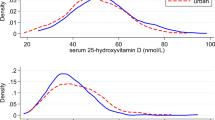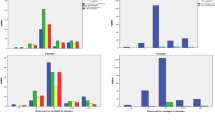Abstract
Objective: To describe fasting plasma total- and lipid standardised-vitamin E and ascorbate concentrations in Hong Kong Chinese subjects, and to explore age-, diet- and sex-related differences.
Design: Observational study.
Setting: Hong Kong.
Subjects: One hundred and fifty randomly selected Chinese subjects.
Interventions: Fasting plasma concentrations of ascorbate, total vitamin E and lipid standardised vitamin E (Vit ELS, expressed as μmol vitamin E/mmol total cholesterol plus triglycerides) were measured.
Results: Total vitamin E concentrations ranged from 6–53 μmol/l (mean 24; s.d. 8.5), and Vit ELS from 0.85–7.09 μmol/mmol (mean 3.61; s.d. 1.19). Plasma Vit ELS concentrations in women were higher (P=0.02) than in men: mean (median) concentrations 3.82 (3.88) and 3.37 (3.28) μmol/mmol, respectively. Vit ELS concentrations in men decreased with age. Mean (s.d.) plasma ascorbate concentrations in men and women were 49.7 (14.0) and 51.6 (21.6) μmol/l respectively, and did not show the significant age- and sex- differences reportedly found in Western studies.
Conclusions: The hypothesis that Hong Kong Chinese, with their low risk of CHD, might have high Vit ELS levels in fasting plasma is not supported by the results obtained. Moreover, results showed male–female differences and, in men, a previously unreported age-related decrease in plasma Vit ELS concentration which cannot be accounted for by concomitant differences in dietary intake of vitamin E alone. Results also suggest that the age- and sex- differences in plasma ascorbate seen in Western populations can be avoided by increased vitamin C intake.
Sonsorship: This work was financially supported by The Hong Kong Polytechnic University and the UK/HK Joint Research Scheme.
This is a preview of subscription content, access via your institution
Access options
Subscribe to this journal
Receive 12 print issues and online access
$259.00 per year
only $21.58 per issue
Buy this article
- Purchase on Springer Link
- Instant access to full article PDF
Prices may be subject to local taxes which are calculated during checkout
Similar content being viewed by others
Author information
Authors and Affiliations
Rights and permissions
About this article
Cite this article
Benzie, I., Janus, E. & Strain, J. Plasma ascorbate and vitamin E levels in Hong Kong Chinese. Eur J Clin Nutr 52, 447–451 (1998). https://doi.org/10.1038/sj.ejcn.1600586
Received:
Revised:
Accepted:
Published:
Issue Date:
DOI: https://doi.org/10.1038/sj.ejcn.1600586
Keywords
This article is cited by
-
The antioxidant profile of three different peaches cultivars (Prunus persica) and their short-term effect on antioxidant status in human
European Food Research and Technology (2007)
-
A study of the effect of oral glucose loading on plasma oxidant:antioxidant balance in normal subjects
European Journal of Nutrition (2005)



